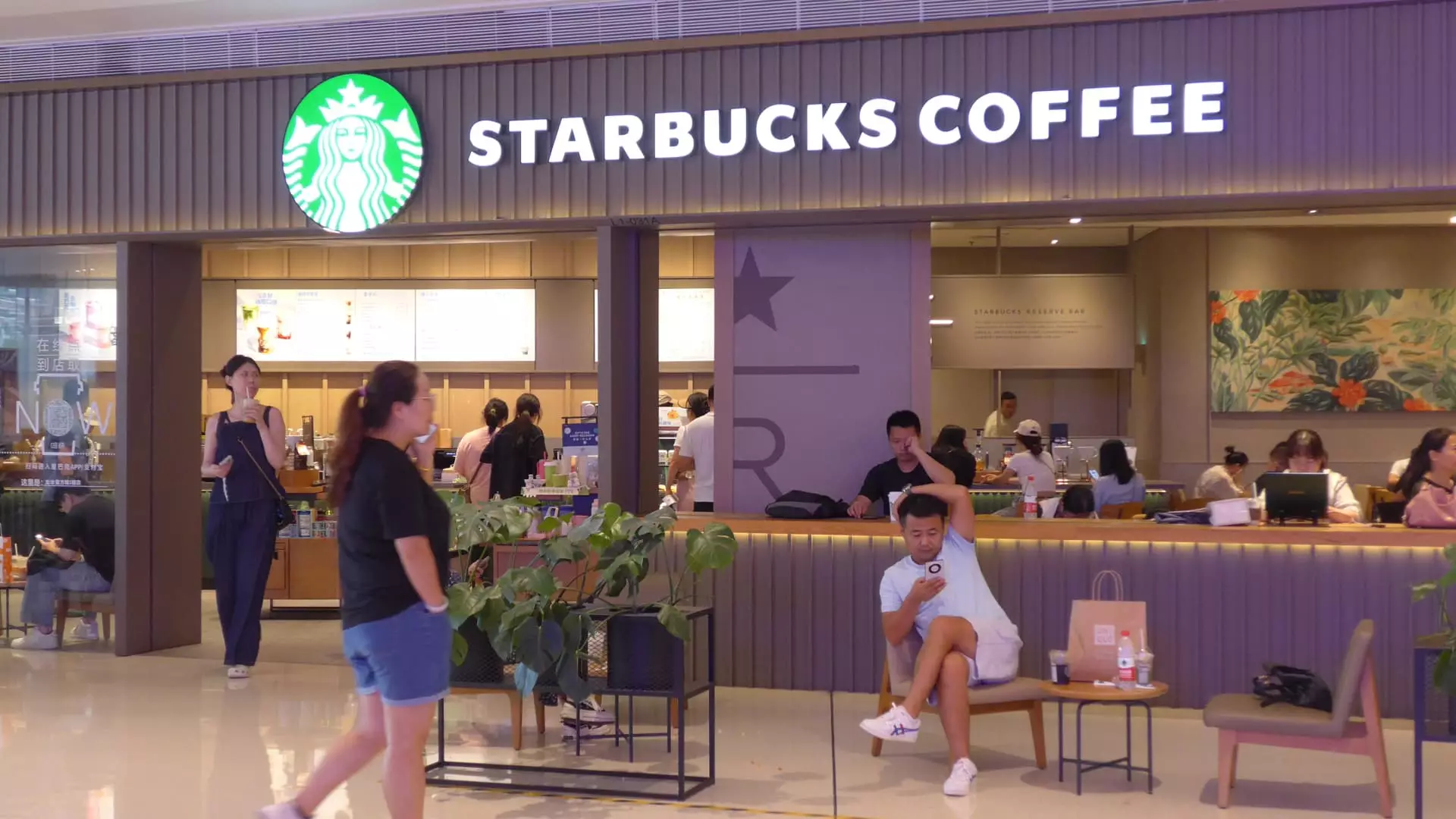The global coffee giant Starbucks has found itself in an increasingly competitive landscape as they navigate the challenges posed by local Chinese coffee brands. Newly appointed CEO Brian Niccol emphasized during a recent earnings call the importance of understanding the dynamics of the Chinese market, where same-store sales experienced a significant decline of 14%. This downturn signals not only a challenge for Starbucks but also a shift in consumer preferences that new players in the coffee market are aggressively capitalizing on.
Starbucks has established a robust presence in China with over 7,300 locations. However, it faces stiff competition from rapidly expanding local coffee brands, particularly the controversial but tenacious Luckin Coffee. Luckin has managed to proliferate its outlets to over 20,000, despite a tumultuous accounting scandal that led to its delisting from Nasdaq. Other contenders such as Cotti Coffee, Manner, M Stand, Seesaw, and Nowwa are also entering the fray, presenting a formidable challenge to Starbucks’ dominance in the market.
These Chinese chains recognize the need to offer competitive pricing, which significantly undercuts Starbucks. For instance, the price disparity for a small latte is stark: while Starbucks charges approximately $4.22, Luckin offers it for about $2.25, Cotti for $1.75, and Manner for $2.11. These lower prices often come with enticing promotions—Luckin recently advertised drinks for as low as 90 cents, a gambit that appeals to budget-conscious consumers in a slowing economy.
The Chinese market is discerning, with price sensitivity becoming a paramount consideration for consumers. As the economy shows signs of strain, customers increasingly seek value without sacrificing quality. Consequently, local coffee chains have adapted their offerings to attract a diverse customer base, presenting innovative beverages that deviate from the traditional coffee norms. They employ unique flavor combinations by mixing coffee with ingredients like fruit juices, flowers, and even unconventional elements such as cheese and rice.
The operational model of these coffee shops further contributes to their appeal. Many of them operate with minimal space and personnel, reinforcing the sense of efficiency and convenience that modern consumers desire. With simplified menus and utilitarian decor, establishments like Manner can pivot quickly to respond to market demands, all while maintaining lower overhead costs that benefit pricing strategies.
In addition to competing directly with coffee rivals, Starbucks faces pressure from a vibrant tea segment, including brands such as ChaPanda, Auntea Jenny, and Mixue Bingcheng. These establishments attract consumers with similar beverage offerings at approximately 60% lower prices than Starbucks. Auntea Jenny’s lattes are priced at around $2.67, while Mixue’s go for an even more astonishing 56 cents. The burgeoning popularity of grab-and-go coffee, particularly from tea chains and convenience stores, further complicates Starbucks’ market position, forcing them to reconsider their pricing and service strategies.
Despite the mounting competition and shifting consumer habits, Starbucks retains a loyal customer base that values the unique experience it provides. The brand has become synonymous with social engagement, serving as a favored venue for friends to meet or business discussions to unfold. This aspect of Starbucks remains a significant selling point; their stores are characterized by pleasant interiors, comfortable seating, and a consistent service ethos that fosters a sense of community—a contrast to the often cramped spaces found in local competitors.
Even as Starbucks contends with the perils of a competitive marketplace, it remains a high-profile aspirational brand in China. This positioning allows the company to leverage its established reputation while adapting to localized consumer preferences. Niccol’s focus on increasing his familiarity with the Chinese market indicates a commitment to evolving Starbucks’ approach in response to emerging trends.
As Starbucks charts a path forward in China, the insights gathered from the local market will be vital to reclaiming its stronghold. With a complex interplay of competitive pricing, evolving consumer preferences, and a burgeoning tea market, Starbucks must be not only reactive but also proactive in redefining its offerings to resonate with a new generation of coffee drinkers. Understanding the nuances of this dynamic environment will ultimately be key to sustaining its status as a leader in the global coffee industry.


Leave a Reply